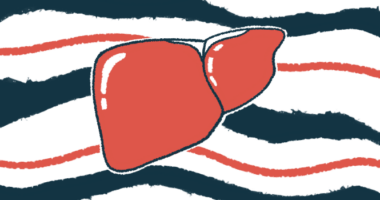Bexotegrast shows positive signs as PSC treatment in Phase 2 trial
Oral therapy safely eases itching, tied to better liver function in patients

Pliant Therapeutics’ investigational oral treatment bexotegrast safely eases itching and is associated with signs of better liver function and less liver scarring, or fibrosis, in people with primary sclerosing cholangitis (PSC) with suspected moderate to severe liver fibrosis.
That’s according to interim three-month data from a Phase 2a clinical trial, dubbed INTEGRIS-PSC (NCT04480840), that’s assessing the safety, pharmacological properties, and preliminary effectiveness of four doses of the therapy. Detailed results were presented by researchers in a company webcast.
Participants in the trial who are receiving the highest evaluated dose will continue on bexotegrast until all have completed at least 24 weeks, or nearly six months, of the PSC treatment. Final data on these patients are expected by mid-year. Meanwhile, Pliant is planning to share available trial data with regulatory authorities to discuss a potential path toward bexotegrast’s approval.
“Results from INTEGRIS-PSC continue to build on the favorable safety and tolerability data for bexotegrast which is critically important in the setting of vulnerable patient populations and the need for chronic therapies,” Éric Lefebvre, MD, chief medical officer of Pliant, said in a company press release. “As the therapeutic profile of bexotegrast comes into focus with these data, it’s encouraging to see bexotegrast’s treatment effects manifested across multiple endpoints [trial goals], suggesting its potential to impact PSC where therapies are urgently needed.”
Trial testing bexotegrast in adults at 4 doses
Cholangitis is a liver condition characterized by inflammation in the bile ducts, which are responsible for carrying bile — a digestive fluid — out of the liver where it’s made to the places it is used or stored.
PSC, a cause of chronic cholangitis, is a progressive disease that’s thought to be linked to abnormal immune responses against healthy bile ducts. The disease’s progressive inflammation and fibrosis lead to bile duct and liver damage that ultimately drive liver failure. To date, there are no approved therapies for the condition.
Formerly known as PLN-74809, bexotegrast is an oral small molecule designed to suppress two types of integrin proteins that drive liver fibrosis. It’s expected to slow or possibly halt liver fibrosis progression, thereby easing disease severity in people with PSC.
Bexotegrast also is being developed for idiopathic pulmonary fibrosis, a fibrotic lung condition.
The INTEGRIS-PSC study, launched in 2020, is testing four doses of bexotegrast — 40, 80, 160, or 320 mg — against a placebo over 12 weeks, or about three months of use. The trial enrolled 121 adults, ages 18-75, with PSC and suspected liver fibrosis.
Its main goal is to evaluate bexotegrast’s safety and tolerability, with assessing the medication’s pharmacokinetics, or its movement into, through, and out of the body, as a secondary goal. Efficacy outcomes are being evaluated in an exploratory manner.
Initial findings concerning the three lower doses were presented in a poster late last year at the American Association for the Study of Liver Diseases (AASLD) The Liver Meeting. Bexotegrast was reported to be well tolerated, and treatment led to reductions in indicators of liver fibrosis and improvements in liver function.
Investigator says bexotegrast is ‘much needed’ PSC treatment
The newly announced three-month findings concerned the high dose of 320 mg, given to a group of 27 patients, as well as combined findings from all tested doses. Altogether, the data involves 91 patients given the PSC treatment candidate.
As at other doses, the highest dose of bexotegrast was well tolerated, with no treatment-related severe or serious adverse events, meeting the trial’s main goal. Concentrations of the medication in the blood increased with increasing doses, thus attaining the secondary goal.
Itching, or pruritis, and acute bouts of cholangitis — both common PSC symptoms — each occurred less often with bexotegrast than the placebo. Indeed, bexotegrast at its two highest doses, and with all doses combined, led to statistically significant reductions in a measure of itch compared with a placebo after three months.
Certainly this is early data … [and] numbers are small. … [But] this is a great launchpad for the future, and hopefully an opportunity to work out where to go with the next steps in developing this much needed therapy for patients.
Bexotegrast was associated with reductions in established indicators of liver fibrosis relative to the placebo. Specifically, increases in Enhanced Liver Fibrosis (ELF) scores during the study were smaller at all bexotegrast doses than with the placebo, although the differences were not statistically significant.
Likewise, the pooled group of all bexotegrast-treated patients saw significant reductions in levels of the fibrosis biomarker PRO-C3 compared with those on the placebo.
MRI imaging indicated that bexotegrast, with all doses combined, significantly increased the function of hepatocytes, the main cells in the liver, and tended to boost bile flow relative to a placebo.
In a subset of patients who had elevations in the liver enzyme alkaline phosphatase (ALP) — a sign of liver damage — at the study’s start, ALP increases over three months were lower across all bexotegrast dose levels than among those given the placebo.
“Certainly this is early data … [and] numbers are small,” Gideon Hirshfield, PhD, a INTEGRIS-PSC investigator and the Lily and Terry Horner chair in autoimmune liver disease of the University of Toronto, said in the company webcast.
Still, “this is a great launchpad for the future, and hopefully an opportunity to work out where to go with the next steps in developing this much needed therapy for patients,” Hirshfield added.







